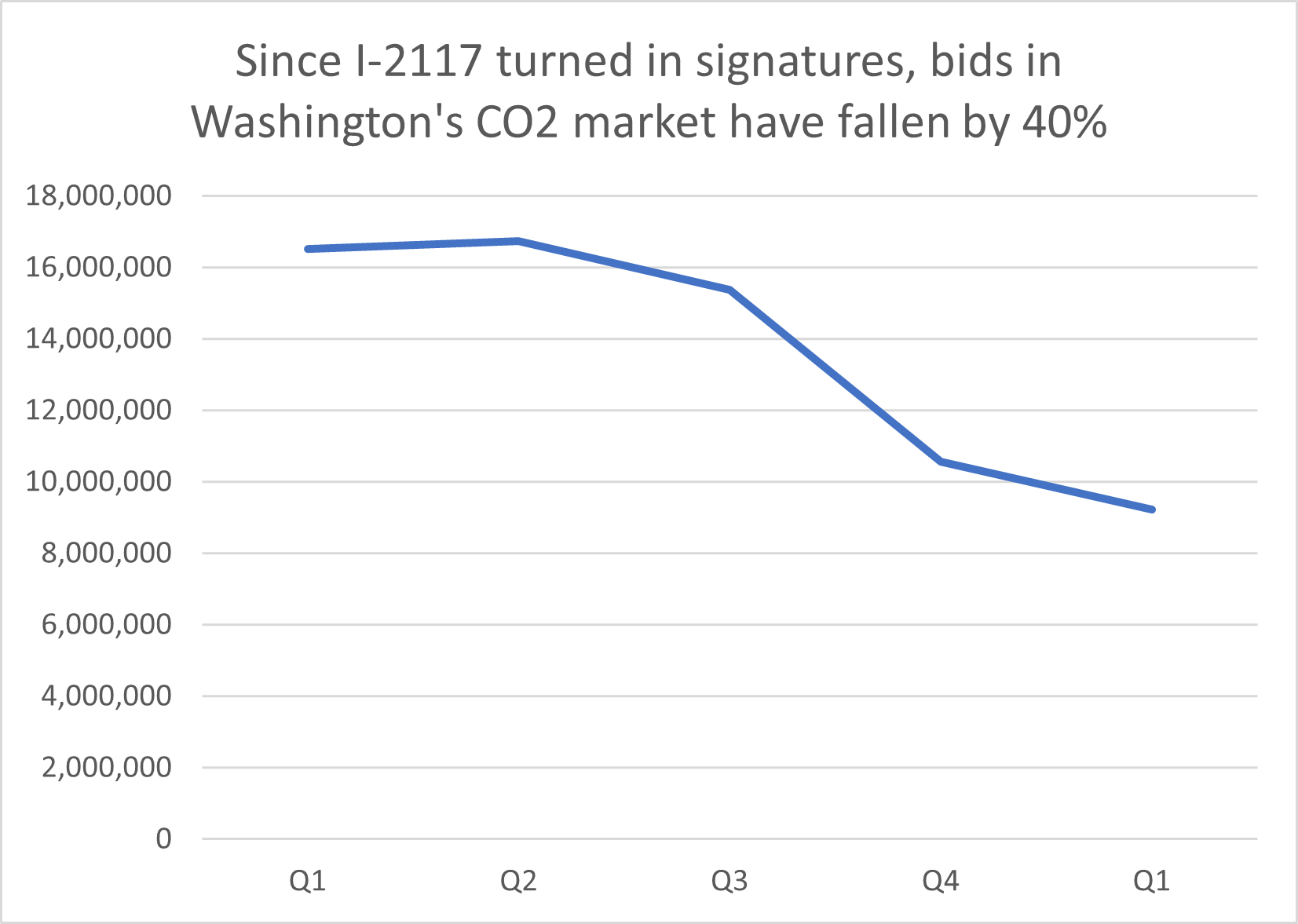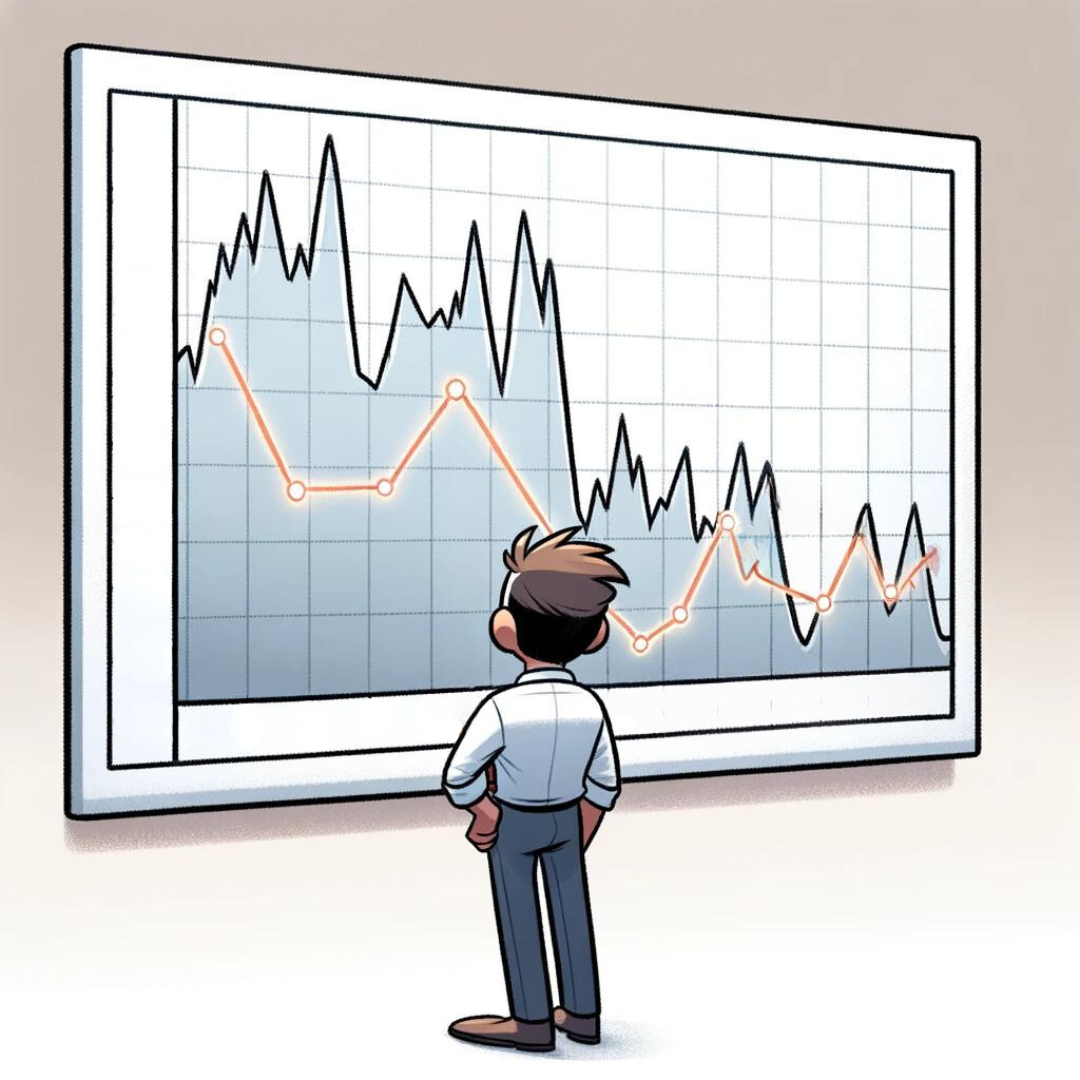Washington residents just received a $137.4 million tax cut. Sort of.
The first quarterly auction of CO2 allowances in the state’s cap-and-trade system was held last week, and the results make it clear that companies expect voters to repeal the law later this year.
The settlement price for CO2 allowances came in at $25.76 per metric ton – less than half the price allowances sold for at the last auction in 2023. That is equivalent to about 20 cents per gallon of gasoline and 25 cents per gallon of diesel.
On March 6, the date of the auction, Washington gas prices were about 30 cents per gallon higher than in Oregon, according to GasBuddy. In 2022, the two states’ gas prices had been virtually identical. Over the next couple of weeks, I expect to see that gap narrow but not completely disappear.
The primary reason the price of CO2 allowances collapsed so significantly is that entities required to buy the allowances believe voters will repeal the CO2 tax this fall, which would make the allowances worthless. The CO2 allowances being purchased in this auction would likely be turned in to the state in 2025. If the Climate Commitment Act (CCA) – the name of the CO2 tax program – is repealed this fall, the requirement to turn the allowances in would go away. Nobody wants to pay for CO2 allowances they will never have to use.
Organizations covered under the law must still hedge because if the CCA is not repealed, the penalties for not having the allowances necessary to comply with the law are very high. So, they go a middle route - bidding to cover their obligations, but at the lowest feasible price. That’s precisely what happened - a price just above the minimum.
The simple fact that I-2117 is on the ballot has caused the market to crash even before the vote.
The data about the number of bidders bear this out.
 The ratio of bids to allowances in the last auction was 1.24 - the lowest of all the four regular auctions. This is 16% lower than December (when the initiative had already been turned in) and 30% lower than Q3. This is even more dramatic because the number of allowances offered declined by 7 percent.
The ratio of bids to allowances in the last auction was 1.24 - the lowest of all the four regular auctions. This is 16% lower than December (when the initiative had already been turned in) and 30% lower than Q3. This is even more dramatic because the number of allowances offered declined by 7 percent.
In the third-quarter auction last year, there were about 15,367,000 bids for allowances. In the most recent auction, there were only about 9,228,000 bids. That is a 40% drop in demand.
The effect of that drop in demand is significant. If CO2 allowance prices had stayed at the $51.89 per metric ton price of the last auction, the state would have collected $272,941,400 in revenue. Instead, the state only took $135,497,600 from the auction. Put another way, Washington residents paid $137.4 million less than they would have if prices had stayed the same.
There are two more auctions before the November election and it seems likely that prices will continue to be lower than expected.
The real savings is probably larger than that because all previous projections indicated prices would increase in 2024. The Department of Ecology’s estimate from 2022 shows prices increasing every year though 2030 as the number of CO2 allowances is reduced every year. Instead of prices increasing, they collapsed.
Despite that sharp decline, supporters of the CCA are claiming this is what they expected and is completely normal.
One of the authors of the CCA, former state senator Reuven Carlyle, who now runs a climate finance company, told the Seattle Times that this showed the CO2 market was becoming more “mature.” That is a truly strange claim. The market prices fell by more than half in one quarter. That is pretty significant volatility that you don’t see in a “mature” market.
A nonprofit run by Carlyle called “Clean and Prosperous” also claimed the price drop was not due to the threat of repealing the CCA but is typical of CO2 cap-and-trade systems. They cite price drops in two other markets starting in 2008 – the Regional Greenhouse Gas Initiative in the Northeast and the European Union ETS – as typical of what happens in CO2 markets.
The timing of these declines is notable. Their examples are during the Great Recession, when global CO2 emissions declined significantly. Their own examples rely on a massive external shock to drive prices down. In the case of Washington state, that external force is the risk that the CCA might not exist next year. Citing market prices during one of the largest worldwide recessions is obviously dubious.
These rationalizations are further undercut by the fact that none of the statements by Carlyle or C&P over in 2023 predicted anything like the price collapse we just saw. To now say they expected this all along is contradicted by their own public comments.
The next auction is set for June 5. If the results of that auction are similar to this one, simply having I-2117 on the ballot will continue to yield the equivalent of a tax cut for Washington residents.




